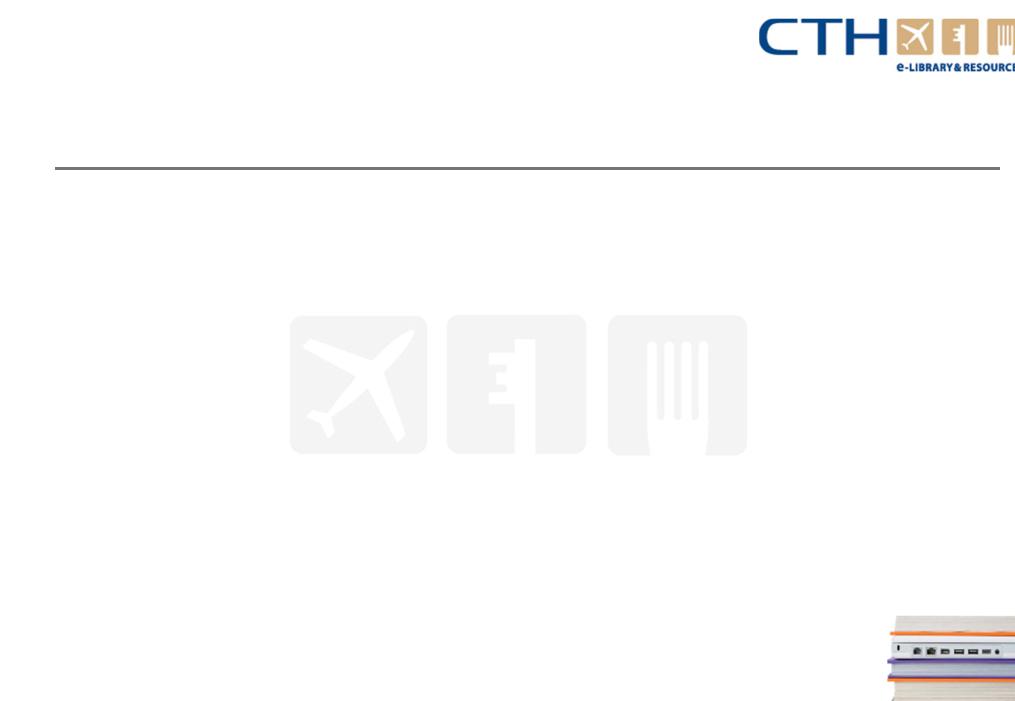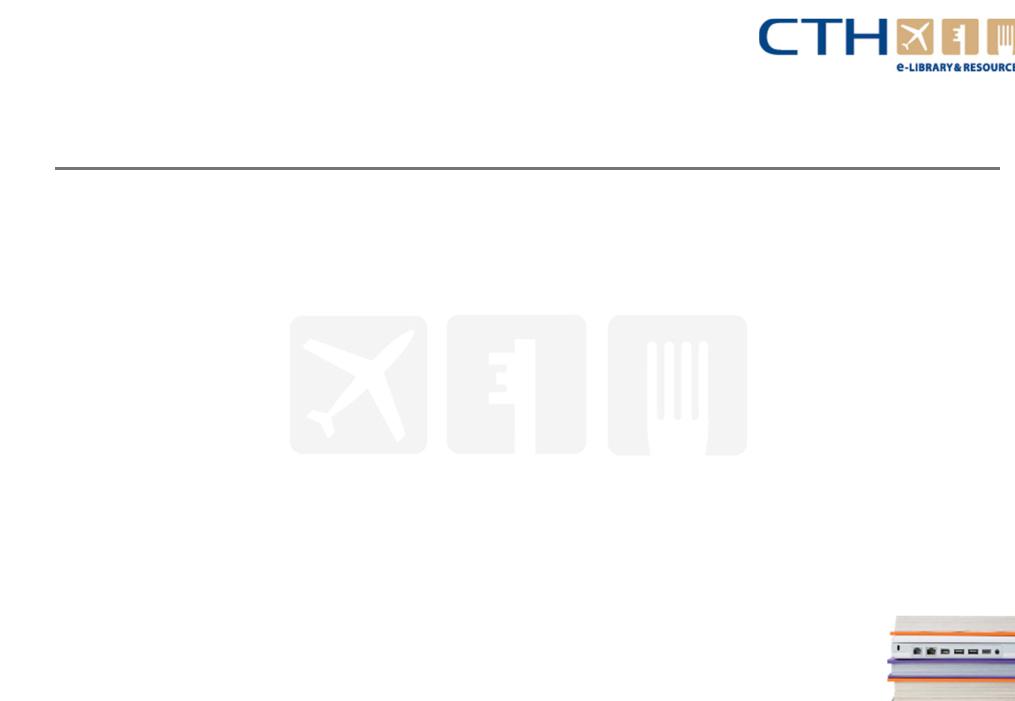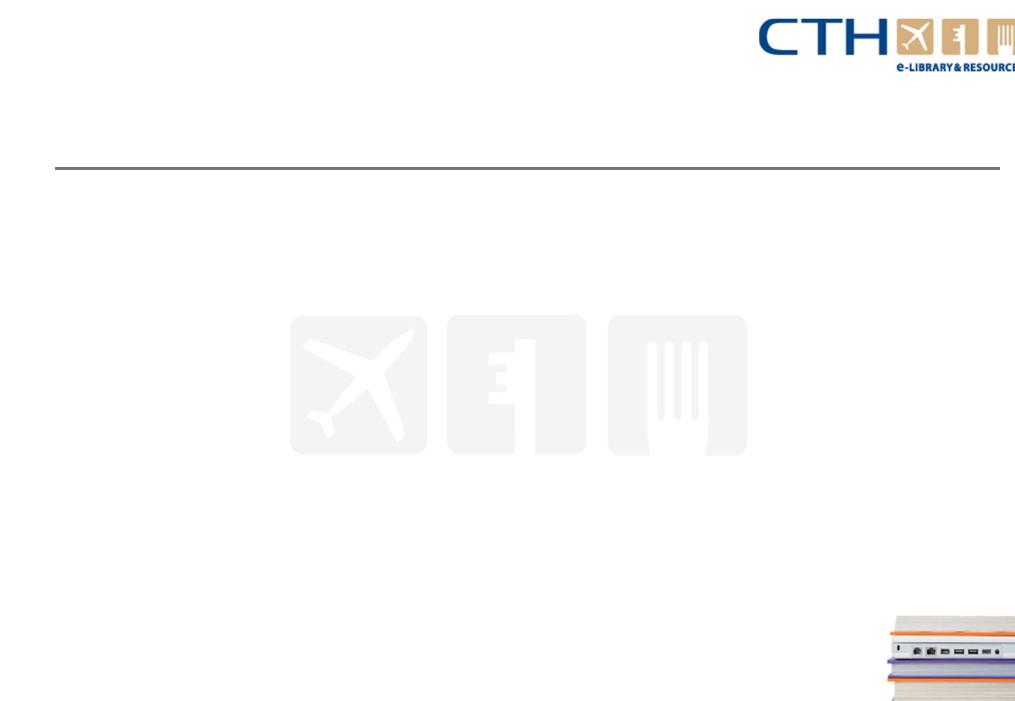
Front_Office_Operations
.pdf
Chapter 7– Security and safety responsibilities
Protection of guest belongings
5.4 Lost property
Despite any or all of the above security measures, guests lose valuables and other items of property: often leaving them behind in various areas of the hotel. It is usually the responsibility of security to store lost property and to liaise with front office to manage Its return to the guest. There should be standard procedures for:
●Holding lost property items in a secure place. Articles found ,in guest rooms after their departure may be kept in a dedicated lost property area. Articles found in other areas in reception or the cashier's office may be held at reception (where guests are most likely to enquire about them) for 24 hours, before unclaimed articles are sent to the lost property area.
●Reporting lost/found property items to the supervisor.
●Recording details of the articles found (usually in a book or dedicated computer record): a complete description of the article; the time, date and place of its finding; and the name of the finder.
●Returning the property to the owner, if possible. If the article is left in a room, the hotel may be able to contact the last known guest. If someone enquires after an article, steps will have to be taken to verify that the person is in fact the owner: they should be able to describe the item fairly accurately before it is handed over, and they should sign a receipt for its return (a copy of which will
be kept by the hotel).
www.cthresources.com |
Page 421 |
|
www.cthawards.com |

Chapter 7– Security and safety responsibilities
Protection of guest belongings
5.4 Lost property continued…
Special procedures may be in place for:
●Urgent, identifiable items – (guests' passports, drivers' licence, travel documents or wallets.) In such cases, every effort should be made to contact the guest (e.g.. if they have left a mobile number, or it is known which airport they are due to depart from).
●Valuable articles, for which special security arrangements may be required: e.g.. held in safety deposit boxes, and subject to rigorous (through polite) verification before being handed to c1aiman
●Suspicious articles, including unidentified bags, parcels or electronic devices. Because pose a safety risk (as discussed earlier), they should not be touched or moved, and their presence should be notified to security or management.
www.cthresources.com |
Page 422 |
|
www.cthawards.com |

Chapter 7– Security and safety responsibilities
Keys and key cards
6.Keys and key cards
6.1Dimensions of security
6.2General principles of security
6.3Who is responsible for security in a hotel?
6.4General hotel security procedures
6.5Suspicious packages or bags
www.cthresources.com |
Page 423 |
|
www.cthawards.com |

Chapter 7– Security and safety responsibilities
Keys and key cards
6.1 Different types of keys
Traditional keys
Some hotels use traditional room keys, attached to some kind of 'tab' which:
●Identifies the hotel and the number of the room for guests
●Is large and heavy enough to act as a reminder to the guest to leave the key at reception when (S)he goes out and, more especially, when (s)he leaves the hotel!
The trouble with traditional keys is that they are all too easy to lose - and if they fall into the wrong hands, it is obvious which door they belong to, giving thieves easy access, Meanwhile, getting the guest into the room involves spares and pass keys and, ultimately, blocking use of the lost or stolen key involves changing the lock.
www.cthresources.com |
Page 424 |
|
www.cthawards.com |

Chapter 7– Security and safety responsibilities
Keys and key cards
6.1 Different types of keys continued…
Key cards
The other problem with traditional keys is that a particularly confident thief could simply walk up to a busy reception In a large hotel and ask for the key to a room, In order to prevent this, some hotels issue 'key cards' to guests on check-in. These consist of a card or small booklet with the guest's name, room number and room rate or terms entered on it, together with pre-printed details of the hotel's services and facilities for the information of guests.
Guests are requested to show their key card at reception whenever they ask for their keys, to verify their right to take them. They may also be used as a general proof of identity in the hotel, or to indicate the guest's right to charge expenses incurred within the hotel (and partner establishments) to his or her account
www.cthresources.com |
Page 425 |
|
www.cthawards.com |

Chapter 7– Security and safety responsibilities
Keys and key cards
6.1 Different types of keys continued…
Electronic keys
An electronic card acts as an entry key to the guests room, by insertion in, or swiping through, a reading device attached to the door locking mechanism. It can also be used:
●To activate power in the guest's room, by insertion in a door-side device. This ensures that lights and air-conditioning are turned off when the guest leaves the room, saving the hotel the costs of utilities - and improving its carbon footprint and 'green' credentials!
●As a 'charge chard' for use within the hotel; authorising the charging of services to the guest's account (e.g.. by verifying the guest's account status and terms) and/or posting charges directly to the guest's account by swiping through electronic point-of-sale devices in the restaurant, bar and so on.
In pure security terms, the electronic key has several advantages over traditional keys.
www.cthresources.com |
Page 426 |
|
www.cthawards.com |

Chapter 7– Security and safety responsibilities
Keys and key cards
6.1 Different types of keys continued…
Cards are not specific to particular rooms: they are attached' to a particular room by insertion or swiping through an activation device - which programmes both the card and the room door with an access code. cards are de-activated or 'cleared' on the guest's departure. This means that:
●Use of the card can be 'blocked' if it is lost, stolen or retained by a departed guest: the room /key code is simply changed, and the old code invalidated.
●Spare and replacement keys can be activated and allocated as required.
●Un-activated keys can be stored space-efficiently and in no particular order with minimal risk of theft (because they do not give access).
www.cthresources.com |
Page 427 |
|
www.cthawards.com |

Chapter 7– Security and safety responsibilities
Keys and key cards
6.2 Storage and handling of keys
This reduces the need for a guest to hand the key into reception each and every time when leaving the premises: there is much less security risk and hassle if the key is lost or stolen, and the electronic key fits neatly into a wallet.
With traditional keys, it is common for guests to be asked to leave their keys with reception when going out, and to pick them up from reception on return to the hotel. In a busy reception, this can amount to quite a lot of to-ing and fro-ing!
Traditional keys are often stored on room-numbered hooks in key racks, enabling reception staff to store and retrieve them easily on request. Electronic keys, being smaller, can be stored in room-numbered racks or index-tabbed filing boxes.
It is important for all traditional keys and activated key cards to be stored safely, and ideally out of sight of guests and general public:
●So that the means of entry to guest rooms are not vulnerable to theft
●So that people cannot see who is in or out of their rooms, since this also increases the risk
of burglary in unattended rooms.
www.cthresources.com |
Page 428 |
|
www.cthawards.com |

Chapter 7– Security and safety responsibilities
Keys and key cards
6.3 Loss of keys
The loss, theft or inadvertent 'taking away' of traditional keys is a problem for the hotel for several reasons, even if it has back-up or spare copies to allow the room to be re-Iet.
●There will be no remaining spare key in case of emergency.
●A replacement key will have to be made.
●More importantly, the situation poses a security risk, as the person with the key can enter the room at any time (exposing subsequent guests in that room to the risk of theft, attack or disturbance).
Some hotels put their postal address on key tabs, with the request that guests who find they have inadvertently walked out with a key post it back to the hotel. However, this does not remove the risk that a copy has been made. The lock should ideally be replaced, and the costs of doing this may be charged to guests who have lost keys (if it is considered that this can be done without loss of goodwill).
www.cthresources.com |
Page 429 |
|
www.cthawards.com |

Chapter 7– Security and safety responsibilities
Keys and key cards
6.4 Master and sub-master keys
The purpose of master keys is:
●To facilitate access to guest rooms by staff responsible for their upkeep (e.g.. housekeeping and maintenance), in the absence of the guest - without their having to carry around a full set of singleroom keys. Sutrmasters are usually used for this purposes: signed out at the beginning of a shift and signed back in at the end, so that their whereabouts (and responsibility for their security) can be clearly identified.
●To allow emergency access to locked rooms and areas for which the key is not available. The key may have been lost or stolen, or someone may have locked themselves into the room (and been taken ill, say).
Master keys are usually strictly controlled, allocated to the duty manager and/or heads of department.
www.cthresources.com |
Page 430 |
|
www.cthawards.com |
